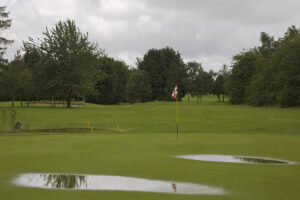Is there any value in using a soil penetrant?
Related Articles
What is a soil penetrant and, if used as part of an effective drainage and aeration strategy, how can it help improve playing conditions throughout the year? Kelly Clack from Origin Amenity Solutions provides answers.
Soil penetrants can form a vital part of our integrated turf management plans. To understand this, we need to understand what a soil penetrant is.
Soil penetrants reduce surface tension and facilitate downward movement of water. This technology improves the speed at which water infiltrates from the soil surface into the soil profile. It is important to note that non-ionic soil surfactants do not change the soil’s physical properties. It enables water to move as quickly as the soil’s physical properties will allow. Primary and secondary drainage systems will improve the soil’s physical properties and form a key part of managing soil moisture. Primary drainage removes excess water from the profile, whilst secondary drainage creates the connectivity of the surface to the primary drainage system. Drainage infiltration should also be supported with an adequate aeration plan for your soil type as well as a top-dressing strategy. Aeration should only be carried out in conducive conditions to avoid deformation of the surface by machinery tracks and the additional compaction in saturated conditions. Altering the soil’s drainage ability will maximise the benefit of soil penetrants.
Why do we need to worry about surface and soil moisture?
During periods of prolonged wetness our soils will become saturated and turf health will start to deteriorate. Turfgrass and soil microbes are aerobic which means it is vital we manage the air to water ratio in our soils. Visual symptoms of saturation stress can include a decline in sward density, reduced rooting and plant health (chlorosis) and an increase in thatch due to lack of decomposition. Turfgrass stress can then lead to disease outbreaks, surface algae, weed and moss invasion in a thinning sward, and potential PPN damage.
Penetrants form an integral part of our integrated turf management plans by keeping our surfaces drier and can be supported by the use of appropriate dew management technologies. By reducing surface moisture and increasing soil infiltration, we can improve air to water ratios in the soil, optimising soil health and supporting organic matter decomposition. In turn we will see a denser sward coverage less susceptible to surface algae, weed and moss invasion and a stronger and healthier turfgrass and root system. This will improve playing conditions throughout the year as well as overall surface performance.
So, quite simply yes, there is value in using a soil penetrant to reduce surface tension and improve infiltration in the soil profile, as long as this is supported with good aeration strategies. Always remember when your soil is saturated, you can only move that water if it has somewhere to go and that is why drainage is imperative.
For more information or advice on soil penetrants, contact Origin Amenity Solutions on 0800 138 7222 or email sales@originamenity.com



























